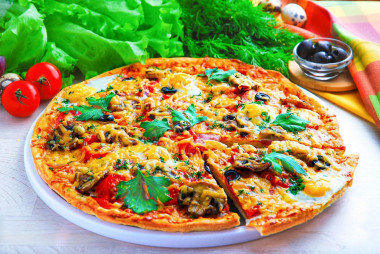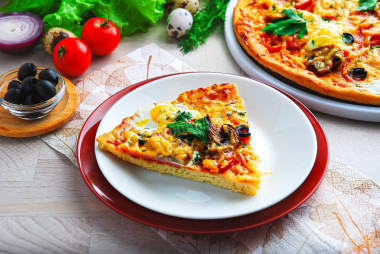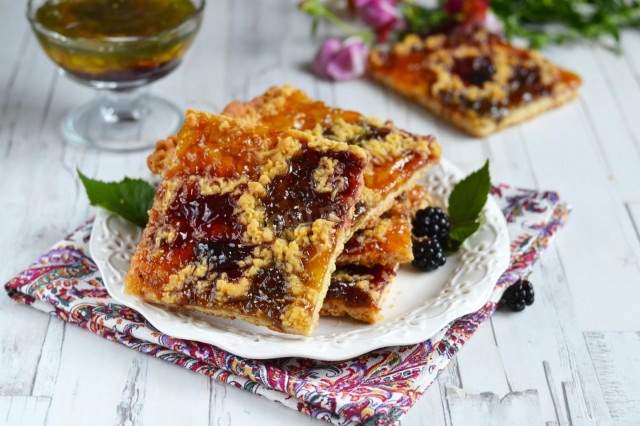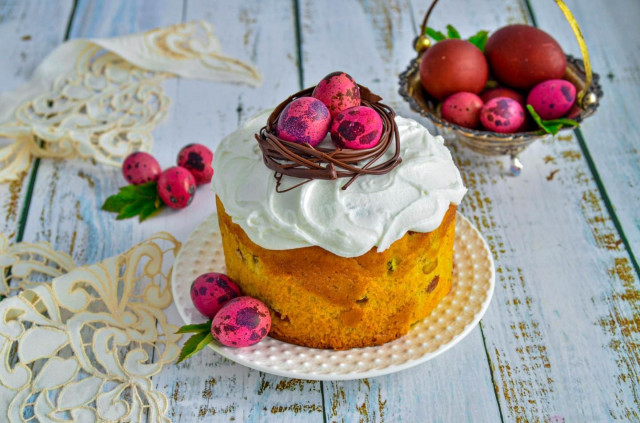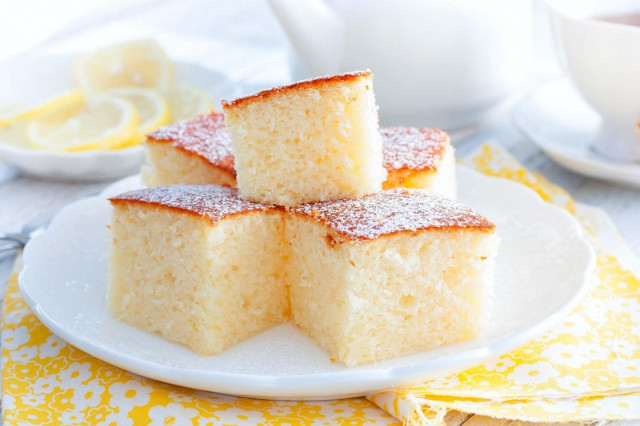Composition / ingredients
Step-by-step cooking
Step 1:
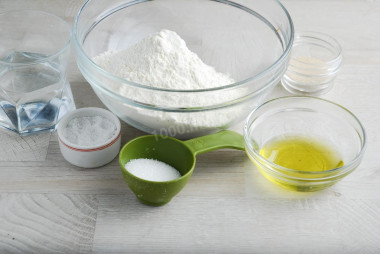
How to make pizza with egg, sausage and cheese? Prepare the ingredients for kneading the yeast dough. Be sure to sift the flour to saturate it with oxygen. I took olive oil, but refined sunflower oil will do.
Step 2:
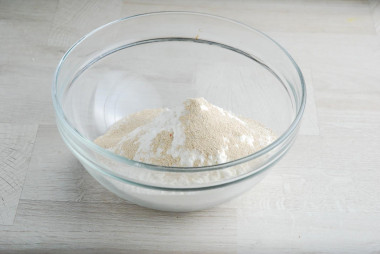
In a suitable container, pour the sifted flour, salt, sugar and dry yeast.
Step 3:
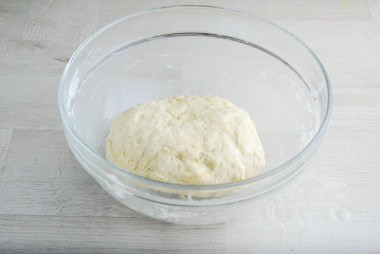
Pour in warm water and knead the steep dough. The water should be exactly warm about 30 degrees, since in hot yeast will die, and in cold it will not work. Also, you may need more or less flour than indicated in the recipe, focus on the desired consistency of the dough. It should be elastic and soft. Put the container with the dough in a warm place without drafts. Leave for 1 hour. During this time, the dough will rise and increase in volume.
Step 4:

Prepare all the necessary ingredients for the filling. I took the sausage semi-smoked. Smoked, boiled sausage or sausages will do. Wash the champignons and dry them with paper towels. Also wash and dry the tomatoes. My onion is red, but the usual onion will do. Instead of quail eggs, you can take three small chicken eggs.
Step 5:

Any hard cheese will do, the main thing is that it is of high quality, tasty and melts well. Grate it on a large or medium-sized grater.
Step 6:
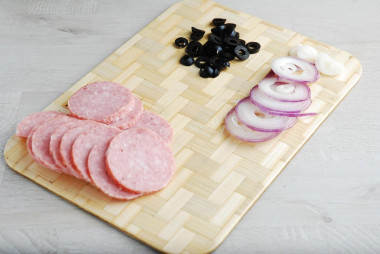
Cut the sausage into thin slices. Peel the onion, rinse it with cool water and also cut into thin rings. Cut the olives into thin slices.
Step 7:

Cut the washed tomatoes into circles or just cut in half.
Step 8:
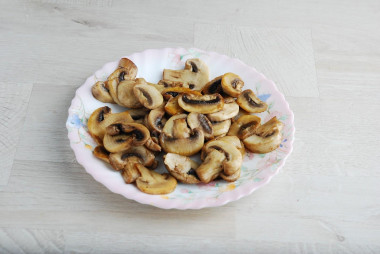
Cut the mushrooms into thin slices and fry in a dry frying pan.
Step 9:
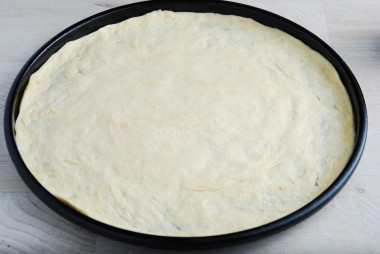
Grease the form in which you will bake pizza with vegetable oil. Knead the risen dough. Roll it out thinly and transfer it to the mold. Since the dough stretches well, I just stretched it with my hands in shape.
Step 10:
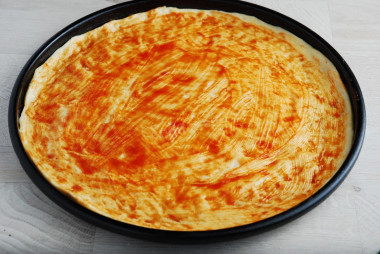
Brush the base with a silicone brush with tomato sauce or ketchup.
Step 11:
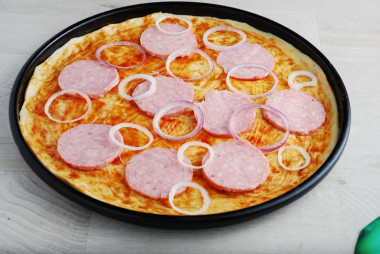
Lay out the sausage and onion slices.
Step 12:
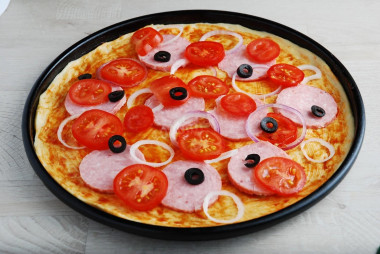
Spread the mushrooms, tomatoes and olives on top.
Step 13:
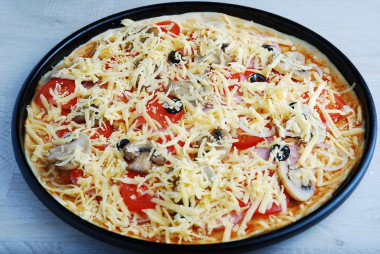
Sprinkle grated cheese on top. Send it to a preheated 180 degree oven. Bake for about 15 minutes.
Step 14:

Take out the pizza mold and carefully beat in the quail eggs one by one, spreading over the entire surface. They will not spread, as the pizza surface is warm and they will quickly seize. I recommend that you first break the eggs into a small plate, and then pour it on the pizza. Sprinkle a little grated cheese on top of them. Return the baking dish to the oven for another 10 minutes. If you want the yolk to remain liquid, take out the pizza earlier.
Step 15:
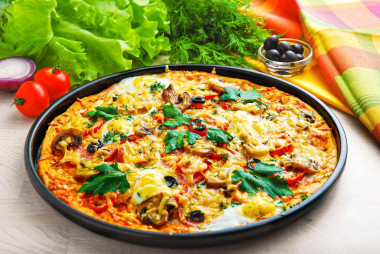
Take the finished egg pizza out of the oven. Sprinkle with any herbs, for example, chopped dill. Garnish with parsley leaves. Serve hot. Bon appetit!
Important! Using dry yeast, it should be borne in mind that they occur in two forms: active and instant (read the instructions carefully before use!).
Active dry yeast looks like beads or small balls. Before applying them, they must be brought out of the "sleep mode". To do this, the active yeast is diluted in warm sweet water, milk or whey. The resulting bubbles, foam or "cap" indicate that the yeast is ready for further use. Active dry yeast must be brought to complete dissolution in the liquid, otherwise, due to the remaining grains, the dough may not rise and the baking will be spoiled (yeast grains that have not dissolved in the liquid and got into the dough will not disperse on their own, which means they will not work).
Instant dry yeast is easier to use. They do not need to be activated before use. Such yeast, along with other ingredients, is simply added to the dough. As a result, the baking time is reduced.
It should also be remembered that both types of dry yeast may differ in their activity from different manufacturers.
For cooking, it is better to use filtered or bottled water that is neutral to taste. If you use tap water, keep in mind that it can give the dish an unpleasant characteristic taste.
Keep in mind that everyone's ovens are different. The temperature and cooking time may differ from those specified in the recipe. To make any baked dish successful, use useful information about the features of ovens !
Caloric content of the products possible in the composition of the dish
- Onion - 41 kcal/100g
- Sausage with fat - 436 kcal/100g
- Pork sausage - 274 kcal/100g
- Veal sausage - 316 kcal/100g
- Dried meat - 264 kcal/100g
- Veal liver sausage - 265 kcal/100g
- Mortadella - 345 kcal/100g
- Sausage separate - 232 kcal/100g
- Fried veal sausage - 343 kcal/100g
- Fried pork sausage - 364 kcal/100g
- Champignons - 24 kcal/100g
- Dutch cheese - 352 kcal/100g
- Swiss cheese - 335 kcal/100g
- Russian cheese - 366 kcal/100g
- Kostroma cheese - 345 kcal/100g
- Yaroslavsky cheese - 361 kcal/100g
- Altai cheese 50% fat content - 356 kcal/100g
- Soviet cheese - 400 kcal/100g
- Cheese "steppe" - 362 kcal/100g
- Uglich cheese - 347 kcal/100g
- Poshekhonsky cheese - 350 kcal/100g
- Lambert cheese - 377 kcal/100g
- Appnzeller cheese with 50% fat content - 400 kcal/100g
- Chester cheese with 50% fat content - 363 kcal/100g
- Edamer cheese with 40% fat content - 340 kcal/100g
- Cheese with mushrooms of 50% fat content - 395 kcal/100g
- Emmental cheese with 45% fat content - 420 kcal/100g
- Gouda cheese with 45% fat content - 356 kcal/100g
- Aiadeus cheese - 364 kcal/100g
- Dom blanc cheese (semi-hard) - 360 kcal/100g
- Lo spalmino cheese - 61 kcal/100g
- Cheese "etorki" (sheep, hard) - 401 kcal/100g
- White cheese - 100 kcal/100g
- Fat yellow cheese - 260 kcal/100g
- Altai cheese - 355 kcal/100g
- Kaunas cheese - 355 kcal/100g
- Latvian cheese - 316 kcal/100g
- Limburger cheese - 327 kcal/100g
- Lithuanian cheese - 250 kcal/100g
- Lake cheese - 350 kcal/100g
- Gruyere cheese - 396 kcal/100g
- Granulated sugar - 398 kcal/100g
- Sugar - 398 kcal/100g
- Olives - 166 kcal/100g
- Salt - 0 kcal/100g
- Quail egg - 168 kcal/100g
- Water - 0 kcal/100g
- Wheat flour - 325 kcal/100g
- Fresh frozen soup greens in a package - 41 kcal/100g
- Greenery - 41 kcal/100g
- Cherry tomatoes - 15 kcal/100g
- Hot tomato sauce - 99 kcal/100g
- Dry yeast - 410 kcal/100g




